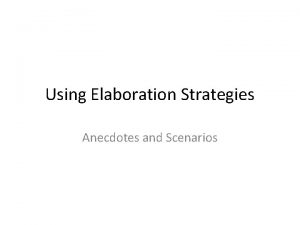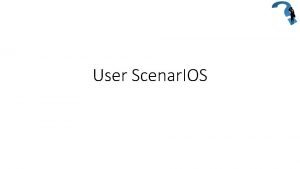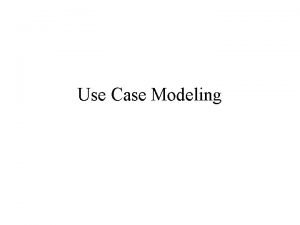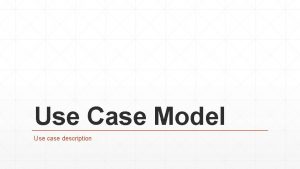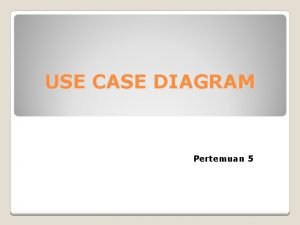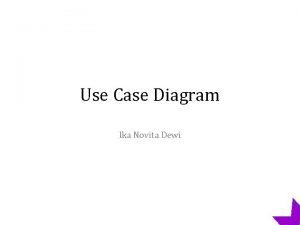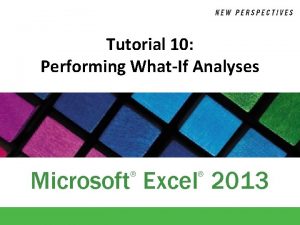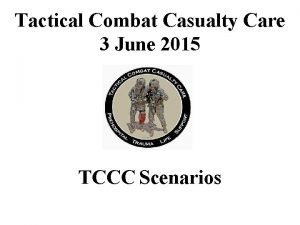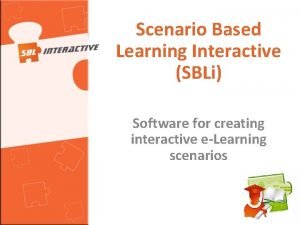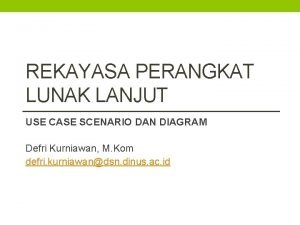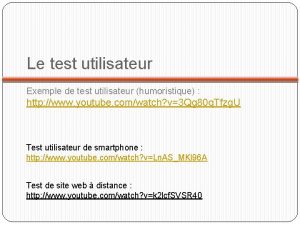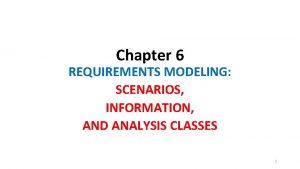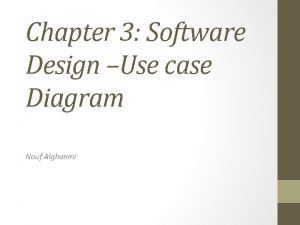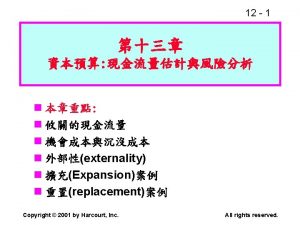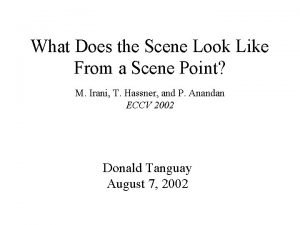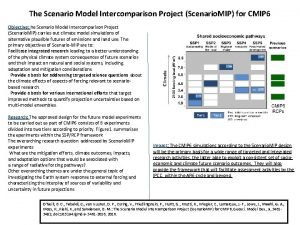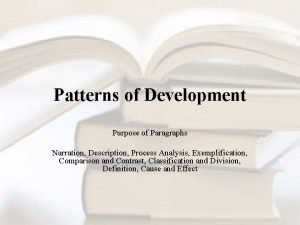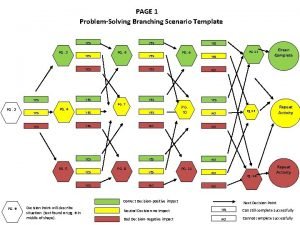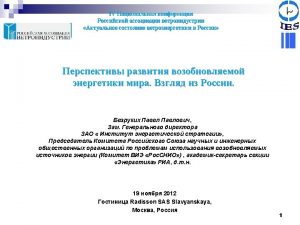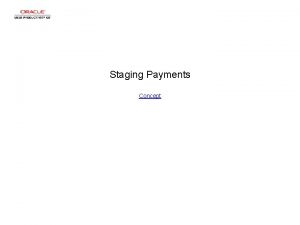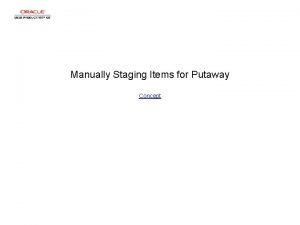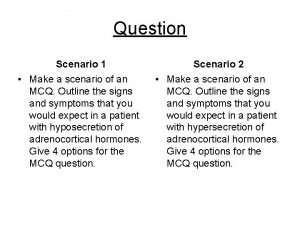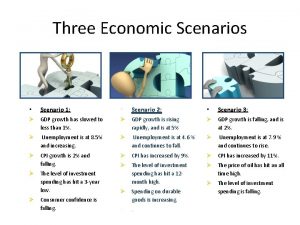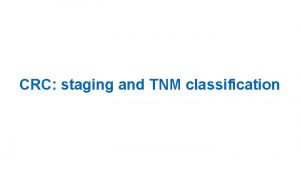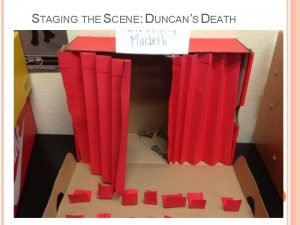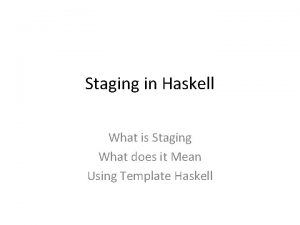Staging a Scenario and Activity Concept Staging a







































- Slides: 39

Staging a Scenario and Activity Concept

Staging a Scenario and Activity

Staging a Scenario and Activity Step 1 Begin by navigating to the Data Staging page. Click the Planning and Budgeting menu.

Staging a Scenario and Activity Step 2 Click the Planning and Budgeting Setup menu.

Staging a Scenario and Activity Step 3 Click the Process Model menu.

Staging a Scenario and Activity Step 4 Click the Data Staging menu.

Staging a Scenario and Activity Step 5 You can run this process by searching for an existing Run Control ID or you can add a new value. Creating a Run Control ID that is relevant to the process may help you remember it for future use. Click the Add a New Value tab.

Staging a Scenario and Activity Step 6 A Run Control ID is an identifier that, when paired with your User ID, uniquely identifies the process you are running. The Run Control ID defines parameters that are used when a process is run. This ensures that when a process runs in the background, the system does not prompt you for additional values. Enter the desired information into the Run Control ID field. Enter "STAGE_MODEL 101".

Staging a Scenario and Activity Step 7 Click the Add button.

Staging a Scenario and Activity Step 8 Use the Data Staging page to enter the request parameters. These parameters will be used to define the processing rules and data to be included when the process is run.

Staging a Scenario and Activity Step 9 Click in the Description field.

Staging a Scenario and Activity Step 10 Enter the desired information into the Description field. Enter "Stage Model 101".

Staging a Scenario and Activity Step 11 Click in the Business Unit field.

Staging a Scenario and Activity Step 12 Use the Business Unit field to define the business unit of the model to be staged. Enter the desired information into the Business Unit field. Enter "US 002".

Staging a Scenario and Activity Step 13 Click in the Planning Model ID field.

Staging a Scenario and Activity Step 14 Use the Planning Model ID field to define the model to be staged. Enter the desired information into the Planning Model ID field. Enter "MODEL 101".

Staging a Scenario and Activity Step 15 Click in the Scenario field.

Staging a Scenario and Activity Step 16 Use the Scenario field to define the scenario of the model to be staged. Enter the desired information into the Scenario field. Enter "2006 SCE".

Staging a Scenario and Activity Step 17 Data can be staged for an individual activity within the model, or for all model activities. Use the All Activities option to stage the data for all activities for the model. Click the All Activities option.

Staging a Scenario and Activity Step 18 Use the Staging Type field for Partial or Standard Staging options. Partial Staging enables you to select the check boxes next to the specific staging functions that you want performed. Standard Staging automatically selects and performs all staging functions. For this example, use the default value.

Staging a Scenario and Activity Step 19 Use the Process Type list to select the desired type of process. Parallel by Activity enables you to process the activities in parallel. Single Processing processes budget data to staging tables for each activity individually, in sequence. Click the Process Type list.

Staging a Scenario and Activity Step 20 Click the Parallel by Activity list item.

Staging a Scenario and Activity Step 21 Click the Save button.

Staging a Scenario and Activity Step 22 Click the Run button.

Staging a Scenario and Activity Step 23 Use the Process Scheduler Request page to enter or update parameters, such as server name and process output format.

Staging a Scenario and Activity Step 24 You must select a Server Name to identify the server on which the process will run. If you use the same Run Control ID for subsequent processes, the server name that you last used will default in this field. Click the Server Name list.

Staging a Scenario and Activity Step 25 Click the PSNT list item.

Staging a Scenario and Activity Step 26 Use the Type field to select the type of output you want to generate for this job. Your four choices are File, Printer, Email, or Web.

Staging a Scenario and Activity Step 27 Use the Format field to define the output format for the report. The values are dependent upon the Process Type you have selected. In this example, the default value is TXT.

Staging a Scenario and Activity Step 28 Click the OK button.

Staging a Scenario and Activity Step 29 Notice the Process Instance number appears. This number helps you identify the process you have run when you check the status.

Staging a Scenario and Activity Step 30 Click the Process Monitor link.

Staging a Scenario and Activity Step 31 Use the Process List page to view the status of submitted process requests.

Staging a Scenario and Activity Step 32 Notice the current status of the process is Processing. The process is finished when the status is Success.

Staging a Scenario and Activity Step 33 Click the Refresh button.

Staging a Scenario and Activity Step 34 As the staging process continues, the activities within the model are first staged, then calculated, as shown in this example.

Staging a Scenario and Activity Step 35 Continue to click the Refresh button until the status is Success. Click the Refresh button.

Staging a Scenario and Activity Step 36 Notice the status is now Success.

Staging a Scenario and Activity Step 37 You have successfully staged a scenario and activity. End of Procedure.
 Debye huckel equation
Debye huckel equation Disaster scenario media and information literacy
Disaster scenario media and information literacy Reactants, products, and leftovers
Reactants, products, and leftovers Aoa and aon network
Aoa and aon network Form content and use
Form content and use Activity 1 activity 2
Activity 1 activity 2 Activity 3 explore me more
Activity 3 explore me more 1index
1index Sedimentary rock concept map
Sedimentary rock concept map Real self means
Real self means Perbedaan pemasaran dan penjualan
Perbedaan pemasaran dan penjualan How to use piecewise functions in real life
How to use piecewise functions in real life Personal anecdote example
Personal anecdote example User scenario example
User scenario example Use case scenario example
Use case scenario example Use case description format
Use case description format Penjelasan use case diagram
Penjelasan use case diagram Use case scenario
Use case scenario How to create a scenario summary report in excel
How to create a scenario summary report in excel Describe the scenario that led prince paris to kidnap helen
Describe the scenario that led prince paris to kidnap helen 9 line ied
9 line ied Tccc scenario cards
Tccc scenario cards Scenario based learning software
Scenario based learning software Contoh use case skenario
Contoh use case skenario Mystery shopping scenario examples
Mystery shopping scenario examples Exemple questionnaire test utilisateur
Exemple questionnaire test utilisateur Thinku know
Thinku know Scenario ideas
Scenario ideas Scenario based modeling in software engineering
Scenario based modeling in software engineering Use case scenario example
Use case scenario example Scenario planning workforce planning
Scenario planning workforce planning Scenario analysis 中文
Scenario analysis 中文 Homography
Homography Scenariomip
Scenariomip Create a scenario summary report
Create a scenario summary report Typical scenario
Typical scenario Exemplification patterns of development
Exemplification patterns of development Branching scenario template
Branching scenario template Nursing care plan case scenario
Nursing care plan case scenario 450 scenario
450 scenario












